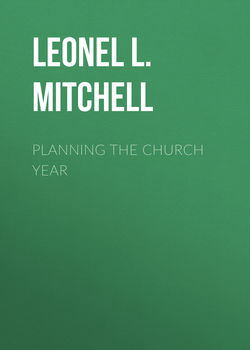Читать книгу Planning the Church Year - Leonel L. Mitchell - Страница 8
На сайте Литреса книга снята с продажи.
Liturgy and Church Life
ОглавлениеLiturgy is the expression of the life of the Church. It expresses our unity in the One Holy Catholic and Apostolic Church. It is our bond of unity with other Christians and in particular with those with whom we are bound in communion. This is not simply a technical term. It means those with whom we celebrate the eucharist and receive communion, for our common liturgy binds us together. The liturgy of The Book of Common Prayer identifies us as a congregation of the Episcopal Church. It visibly identifies this congregation with other congregations, and where this continuity from congregation to congregation is not apparent, we fail to manifest our unity in Christ.
The liturgy is also an expression of our congregational unity, and it is ultimately the concern of the whole people of God. The priest presides over the assembly but does not rule over the congregation. The canons of the Episcopal Church give the rector ultimate control of worship, but this can only be exercised within a congregation. A symphony conductor cannot function without a body of musicians, and a priest cannot function liturgically without a worshiping congregation.
The full, active, intelligent participation of all the people of God in the liturgy is the right and duty of every baptized man, woman, and child, by reason of their baptism, because worship is a part of the priestly activity of Jesus Christ in which the priestly people of God participate as members of the Body of which he is the Head. The eucharist, for example, is described as the sacrifice of Christ—celebrated in Head and members. Worship is not a performance by skilled professionals for a passive audience. It is the common work of a group of brothers and sisters. The Pauline churches in the New Testament clearly expected the members of the congregation to share their talents, whatever they were, in the worship of the Church.
Every congregation has its own life and tradition, including musical and liturgical traditions. Not every option in the Prayer Book and Hymnal is really available to every congregation. Not only are some things beyond their resources, some things “just aren’t us.” This is neither good nor bad but simply the way things are. Congregations, like individuals, have preferences and tastes. Golden copes and clouds of incense may or may not be a part of your tradition. One congregation prefers the guitar and “renewal” music, another sings only plainsong, while a third carefully avoids both.
Liturgical planners need to look at the life of the parish in its totality and set up general parameters for worship. They need to begin with a realistic inventory of their resources, including both people and things.
